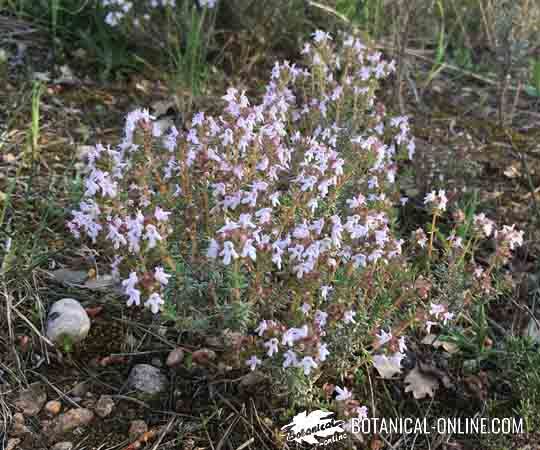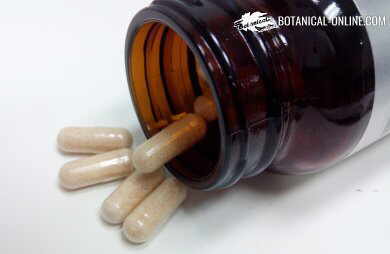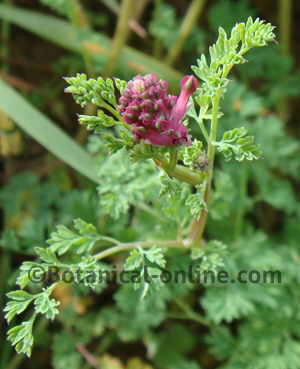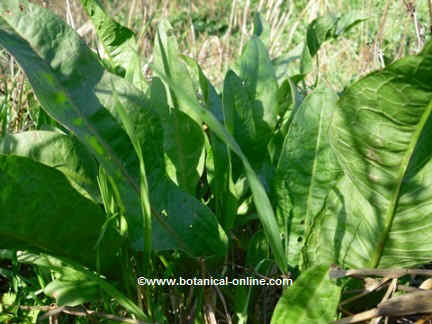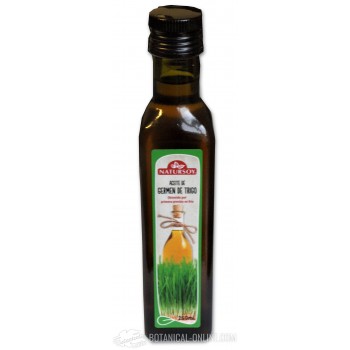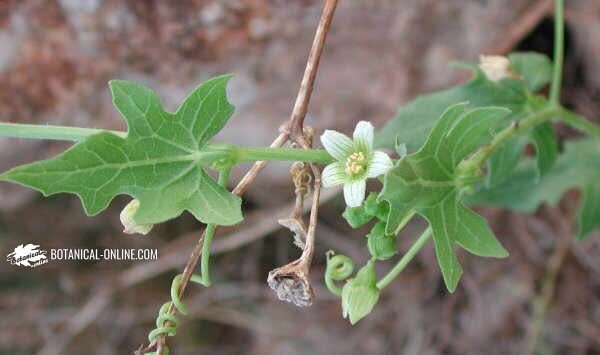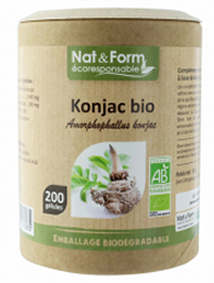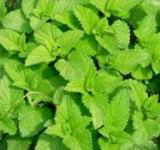Contents
- 1 Curative remedies with chickpea plant
- 1.1 REMEDIES MADE CHICKPEAS
- 1.2 Traditional medicinal uses of chickpeas
- 1.3 Chickpeas have been considered by Chinese medicine very beneficial to the kidneys for its diuretic properties.
- 1.4 NATURAL HINDU MEDICINE REMEDIES WITH CHICKPEAS
- 1.5 Internal use preparation with chickpeas
- 1.6 External use applications of chikpea poultices
- 1.7 Current medicinal uses of chickpeas in the West
- 1.8 Toxicity of chickpeas
Curative remedies with chickpea plant
REMEDIES MADE CHICKPEAS
There are few references on the medicinal properties of chickpeas . There are no current studies on the properties of this plant so we must resort to what the classical scholars tell us or what they think of the folk tradition.
Traditional medicinal uses of chickpeas
The Greek physician Dioscorides in Materia Medica refers to chickpeas calling them diuretic (increases the proportion of urine) and emmenagogue (facilitate menstruation). He also said to help women in labor to ease childbirth and to increase milk production.
Used externally, according to this author, chickpeas can help heal skin diseases, especially warts and chilblains, when applied as emplastro, whereas, if cooked with honey, can treat diaper rash, scabies or cancerous sores.
Chickpeas have been considered by Chinese medicine very beneficial to the kidneys for its diuretic properties.
The Spanish physician and botanist Andres Laguna (1499-1559), reviewing the work of Dioscorides in Materia Medica, comments Dioscorides’ remarks. He says the chickpea broth would be good to break up kidney stones and the gallbladder, and to expel intestinal worms, when eaten sprinkled with vinegar.
Used externally, if they are crushed and mixed with honey, they can be applied on the patches of skin to make them disappear.
The author warns of the problems that can cause when internal treatments are performed in people with ulcers in the kidneys or bladder and the difficulty of digesting them well.
The physical and London apothecary Nicholas Culpeper (1616 – 1654) in his “Complete Herbal” offers similar properties to what they think the classics. It reads as follows:
| ” They are less windy than beans, but nourish more; they provoke urine, and are thought to increase sperm; they have a cleansing faculty, whereby they break the stone in the kidneys. To drink the cream of them, being boiled in water, is the best way. It moves the belly downwards, provokes Women’s courses and urine, increases both milk and seed. One ounce of Cicers, two ounces of French barley, and a small handful of Marsh-mallow roots, clean washed and cut, being boiled in the broth of a chicken, and four ounces taken in the morning, and fasting two hours after, is a good medicine for a pain in the sides. The white Cicers are used more for meat than medicine, yet have the same effect, and are thought more powerful to increase milk and seed. The wild Cicers are so much more powerful than the garden kinds, by how much they exceed them in heat and dryness; whereby they do more open obstructions, break the stone, and have all the properties of cutting, opening, digesting, and dissolving; and this more speedily and certainly than the former” |
NATURAL HINDU MEDICINE REMEDIES WITH CHICKPEAS
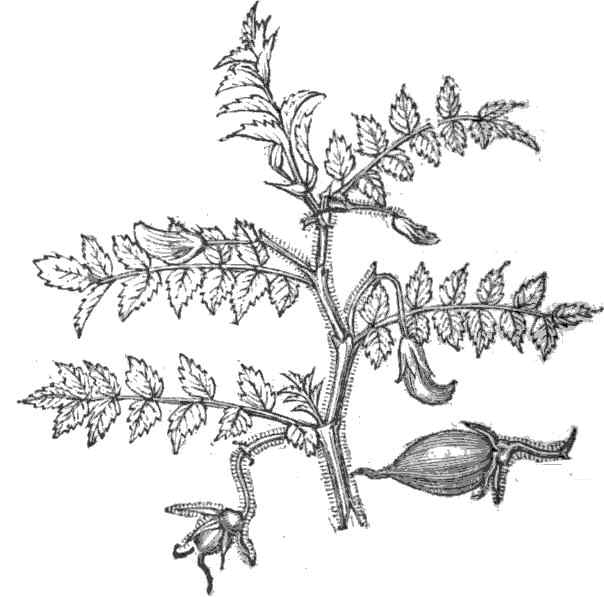 Drawing of chickpea
Drawing of chickpea
Internal use preparation with chickpeas
In India, chickpea plant is considered one of the main resources of natural medicine. Thus, for example, using the glandular secretions that the plant produces in the fruit, the stem and the leaves, they can treat numerous diseases: cold, bronchitis, diarrhea, flatulence, indigestion, vomiting, sunburn and warts.
The method used is to leave the liquid on a cloth overnight and squeeze in the morning to keep it in a bowl. This preparation is also used as an stimulant.
In cases of impotence or premature ejaculation an effective remedy consists on cakes made with chickpea flour, mixed with dates and milk powder.
As a tonic there is an Hindu remedy in which chickpeas are soaked overnight and, in the next day, they mix the liquid with honey. The same liquid for its wealth in iron was used to fight anemia.
In this country, they usually use a sitz bath in warm water in which they have poured a few handfuls of the dried plant to lessen the pain of menstruation or irregular periods.
External use applications of chikpea poultices
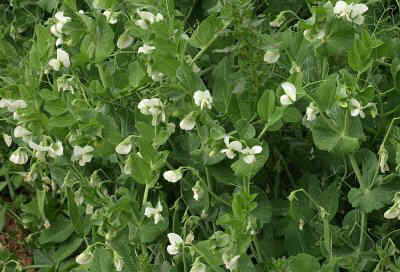 Chickpea with white flowers. They can also be pink or purple
Chickpea with white flowers. They can also be pink or purple
Externally, the chickpea plant is used in this country for the treatment of abnormal skin and hair.
The raw chickpea flour mixed with yogurt or curd can be applied to the skin to combat eczema, dermatitis, pimples and other skin imperfections.
Current medicinal uses of chickpeas in the West
Phytochemical studies carried out at present have suggested that some of the traditional properties held in different parts of the world could have a scientific basis.
It was found that chickpeas, like soybeans, are rich in isoflavones, such as ginesteína and daidzein, and beta-carotene, two components with proven effectiveness in preventing cancer since they interfere with cell mutations that could develop cancer.
The diuretic properties of chickpea are justified by their high wealth in the minerals potassium, magnesium and calcium, and also by the presence of vitamin C, fiber and the amino acid arginine.
Arginine could be the component that helps repair wounds, because it has been shown that arginine is in charge of boosting the immune system by encouraging the body to create leukocytes.
The astringent properties of chickpea seed are due to its richness in zinc. These properties have been used in some places to industrially produce a chickpea milk which has proved very effective in treating diarrhea.
In spite of the traditional references, no studies have been done to justify its current use as a medicinal plant. Consequently, we should be careful in the preparation of home remedies with chickpea plant in all its parts, especially in regard to its internal use.
Toxicity of chickpeas
Chickpeas, like the rest of the legumes, except the germinated, should not be eaten raw.
Raw chickpeas contain toxins that are eliminated after putting them to soak and cook them in water. Ingestion of cakes made with chickpea flour cooked in the oven without water is also responsible for cases of neurolathyrism.
The use of liquids made with chickpeas soaking is very rich in oxalic acid which, currently used, can cause stomach problems or facilitate the formation of kidney stones or gallbladderstones
* Related information: Chickpeas contraindications
![]() More information on chickpea.
More information on chickpea.

